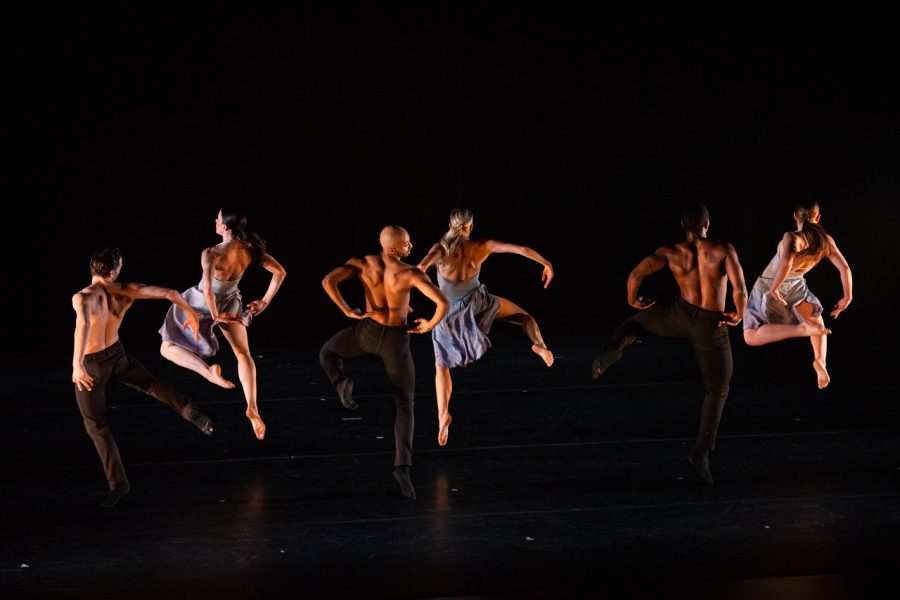Weis Center hosts acclaimed Parsons Dance
January 24, 2019
The University welcomed Parsons Dance to the Weis Center for the Performing Arts on Jan. 18. The performance was the Weis Center’s first event of the spring semester. Based in New York City, Parsons Dance is an internationally renowned dance company known for their fluid intermingling of modern dance with elements of classical dance. The Weis Center served as the company’s most recent host on their tour across both North America and Italy. For the University’s audience, they performed “Wolfgang,” duet from “Finding Center,” “Kind of Blue,” “Microburst,” “Hand Dance,” “Caught,” and “Whirlaway.”
For the opening piece, “Wolfgang,” the dancers incorporated traditional ballet with highly energized movements, giving the piece a contemporary twist. The juxtaposition between the use of Mozart’s classic “Symphony No. 25 in G minor” and the dancers’ athletic movements stood as an example of the company’s mission to incorporate various styles of dance into its performances.
Although each of the six pieces that Parsons Dance performed varied in both style and energy, the use of specialized lighting remained constant during every performance.
“For me, the most captivating aspect of the performance was the interplay between the lighting and the dancers’ movements. The collaboration of audio and visualsーthe heart of dance performanceーis expertly manipulated by Parsons Dance Company,” Sage Lamade ’22 said.
The “Hand Dance” isolated the dancers’ hands and forearms by illuminating them with light, leaving the rest of the dancers’ bodies in complete darkness. During the piece, the dancers only used their hands to create shapes such as a slithering snake and ascending bridges, which were all choreographed to light-hearted hoe-down music.
“I really loved the different uses of lights with the ‘Hand Dance’ using just illuminated hands and ‘Caught’ using the strobe lights,” Emily Taylor ’21 said.
“Caught,” choreographed by the founder David Parsons in 1982, is the most iconic dance performed by the company. The melding of art and technology throughout the dance creates the illusion of flying. During the piece, the dancer is caught mid-air by a series of strobe lights, making it seem as if he never touched the ground in between jumps. The flashing of the strobe lights mid-jump created a photo-esque appearance, as the dancer can only be seen in the light for a few split seconds before the stage becomes dark again.
“I was shocked at how athletic the dance was,” Marta Majewski ’22 said.
Upcoming events at the Weis Center include St. Olaf Orchestra with Sarah Chang on Jan. 31 and Imago Theatre: “Frogz” on Feb. 5.





















